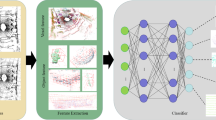Abstract
Helicopters are widely used in emergency situations, where knowing if a geographical location is adequate for landing is a critical issue, and it is far from being a straightforward task. In this work, we present a method to detect and classify landing sites from LiDAR data in parallel on multi- and manycore systems using OpenMP. Load balancing was identified as the main cause of poor performance because the computational cost depends mainly on the input data. Results for a set of LiDAR point clouds that represent different real scenarios were used as case studies in this work. Balancing strategies for three different multi- and manycore systems were analyzed. The proposed load balancing techniques increase performance up to three times from the unbalanced case.














Similar content being viewed by others
References
Dagum L, Enon R (1998) OpenMP: an industry standard API for shared-memory programming. Comput Sci Eng IEEE 5(1):46–55
Gong J, Lee HJ, Cho G (2008) Parallel algorithm for object extraction from ranging data. http://dcs.chonbuk.ac.kr/~jgong/papers/Parallel%20Algorithm%20for%20Object%20Extraction%20from%20Ranging%20Data.pdf, technical Report, online. Accessed Nov 2016
Hodgson ME, Bresnahan P (2004) Accuracy of airborne lidar-derived elevation. Photogramm Eng Remote Sens 70(3):331–339
ISPRS (2016) ISPRS test project on urban classification, 3D building reconstruction and semantic labeling. http://www2.isprs.org/commissions/comm3/wg4/tests.html. Accessed Nov 2016
Johnson AE, Klumpp AR, Collier JB, Wolf AA (2002) LiDAR-based hazard avoidance for safe landing on Mars. J Guide Control Dyn 25(6):1091–1099
Jung JH, Crawford MM, Lee SH (2009) Complexity estimation based work load balancing for a parallel LiDAR waveform decomposition algorithm. Korean J Remote Sens 25(6):547–557
Li J, Lee HJ, Cho GS (2008) Parallel algorithm for road points extraction from massive LiDAR data. In: Parallel and distributed processing with applications, 2008. ISPA’08. International symposium on, IEEE, pp 308–315
Lorenzo OG, Martínez J, Vilariño DL, Pena TF, Cabaleiro JC, Rivera FF (2016) Parallel landing sites detection using LiDAR data on manycore systems. In: 16th International Conference on Computational and Mathematical Methods in Science and Engineering, CMMSE, pp 805–816
Maturana D, Scherer S (2015) 3D convolutional neural networks for landing zone detection from LiDAR. In: Robotics and Automation (ICRA), 2015 IEEE International Conference on, IEEE, pp 3471–3478
Moravec H, Elfes A (1985) High resolution maps from wide angle sonar. In: Robotics and Automation, Proceedings of 1985 IEEE International Conference on, IEEE, vol 2, pp 116–121
Mosa ASM, Schön B, Bertolotto M, Laefer DF (2012) Evaluating the benefits of octree-based indexing for LiDAR data. Photogram Eng Remote Sens 78(9):927–934
OpenTopography (2016) LiDAR point cloud data distribution and processing. http://opentopo.sdsc.edu/lidar. Accessed Nov 2016
Peason K (1901) On lines and planes of closest fit to systems of point in space. Philos Magn 2:559–572
Ramachandran A, Vienne J, Van Der Wijngaart R, Koesterke L, Sharapov I (2013) Performance evaluation of NAS parallel benchmarks on intel Xeon Phi. In: Parallel Processing (ICPP), 2013 42nd International Conference on, IEEE, pp 736–743
Scherer S, Chamberlain L, Singh S (2012) Autonomous landing at unprepared sites by a full-scale helicopter. Robot Auton Syst 60(12):1545–1562
Schmidl D, Cramer T, Wienke S, Terboven C, Müller MS (2013) Assessing the performance of openmp programs on the intel xeon phi. In: European Conference on Parallel Processing, Springer, pp 547–558
Shan J, Toth CK (2008) Topographic laser ranging and scanning: principles and processing. CRC Press, New York
Whalley M, Takahashi M, Tsenkov P, Schulein G, Goerzen C (2009) Field-testing of a helicopter UAV obstacle field navigation and landing system. In: 65th Annual Forum of the American Helicopter Society, Grapevine, TX
Zhang T, Li J (2015) Online task scheduling for LiDAR data preprocessing on hybrid GPU/CPU devices: a reinforcement learning approach. IEEE J Select Topic Appl Earth Obser Remote Sens 8(1):386–397
Acknowledgments
This work has been partially supported by the Ministry of Economy and Competitiveness of Spain under project TIN2013-41129-P and Xunta de Galicia under projects GRC2014/008 and GRC GI-1638. It has been developed in the framework of the European network HiPEAC-2, the Spanish network CAPAP-H, the Galician network under the Consolidation Program of Competitive Research Units (TLIX Network ref. R2014/049). This work is also a result of a collaboration with INAER and the Laborate group of the University of Santiago de Compostela.
Author information
Authors and Affiliations
Corresponding author
Rights and permissions
About this article
Cite this article
Lorenzo, O.G., Martínez, J., Vilariño, D.L. et al. Landing sites detection using LiDAR data on manycore systems. J Supercomput 73, 557–575 (2017). https://doi.org/10.1007/s11227-016-1912-7
Published:
Issue Date:
DOI: https://doi.org/10.1007/s11227-016-1912-7




